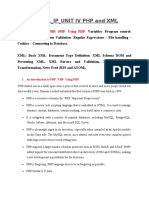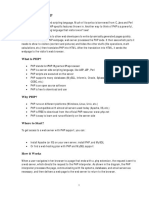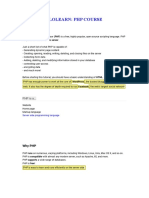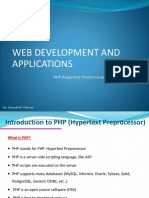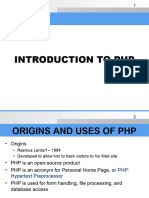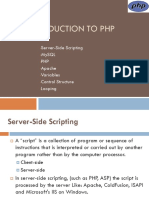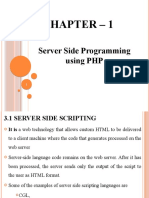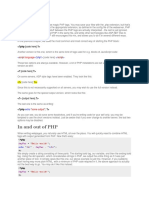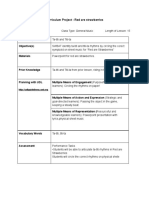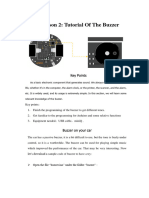0% found this document useful (0 votes)
13 views7 pagesAbstract PHP
The document provides an overview of PHP syntax, detailing various ways to embed PHP code within HTML using different tag styles, such as canonical PHP tags and ASP style tags. It also explains commenting methods in PHP, the case sensitivity of the language, and how to run PHP scripts from the command line. Overall, it serves as a basic introduction to PHP syntax for beginners.
Uploaded by
IrodaCopyright
© © All Rights Reserved
We take content rights seriously. If you suspect this is your content, claim it here.
Available Formats
Download as DOCX, PDF, TXT or read online on Scribd
0% found this document useful (0 votes)
13 views7 pagesAbstract PHP
The document provides an overview of PHP syntax, detailing various ways to embed PHP code within HTML using different tag styles, such as canonical PHP tags and ASP style tags. It also explains commenting methods in PHP, the case sensitivity of the language, and how to run PHP scripts from the command line. Overall, it serves as a basic introduction to PHP syntax for beginners.
Uploaded by
IrodaCopyright
© © All Rights Reserved
We take content rights seriously. If you suspect this is your content, claim it here.
Available Formats
Download as DOCX, PDF, TXT or read online on Scribd
/ 7


